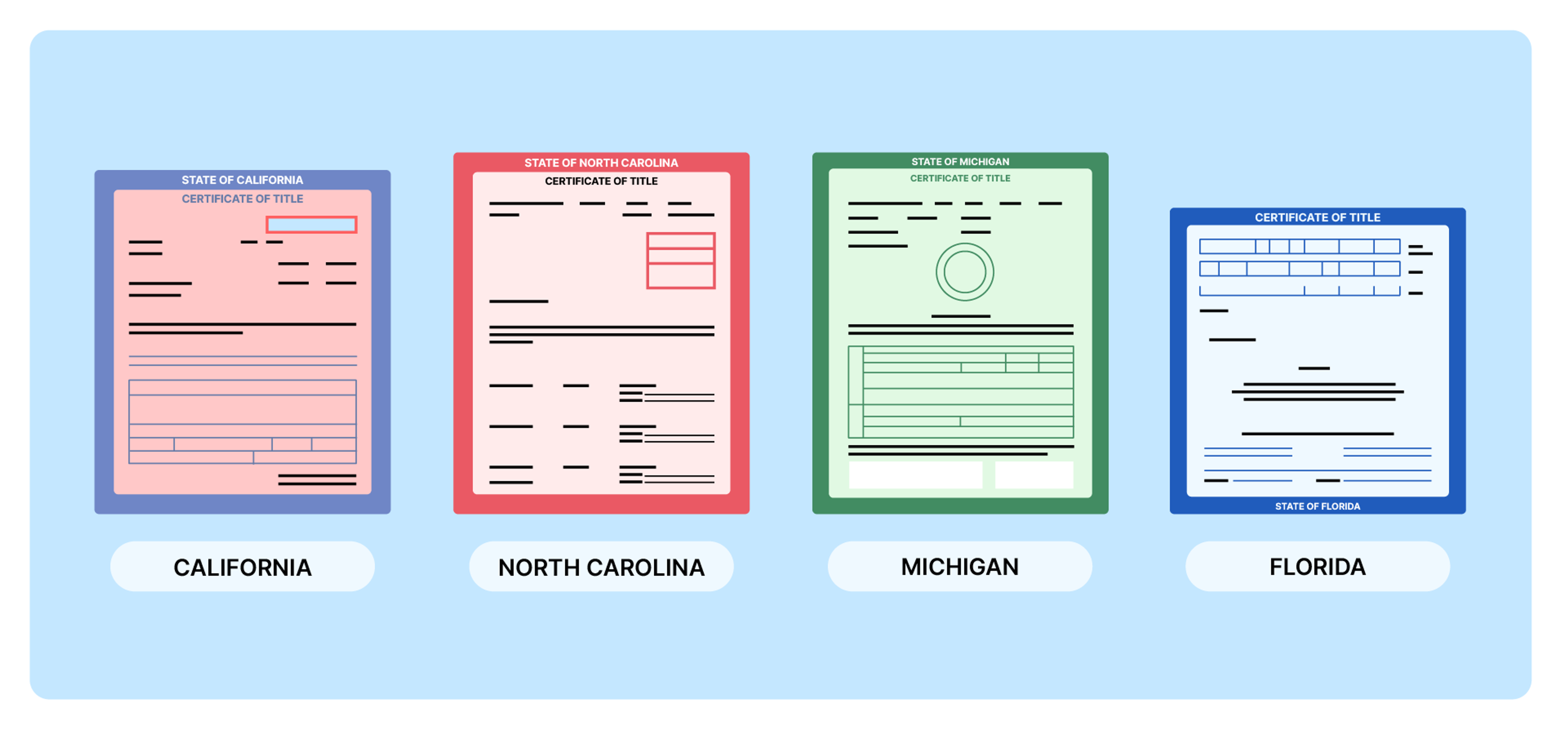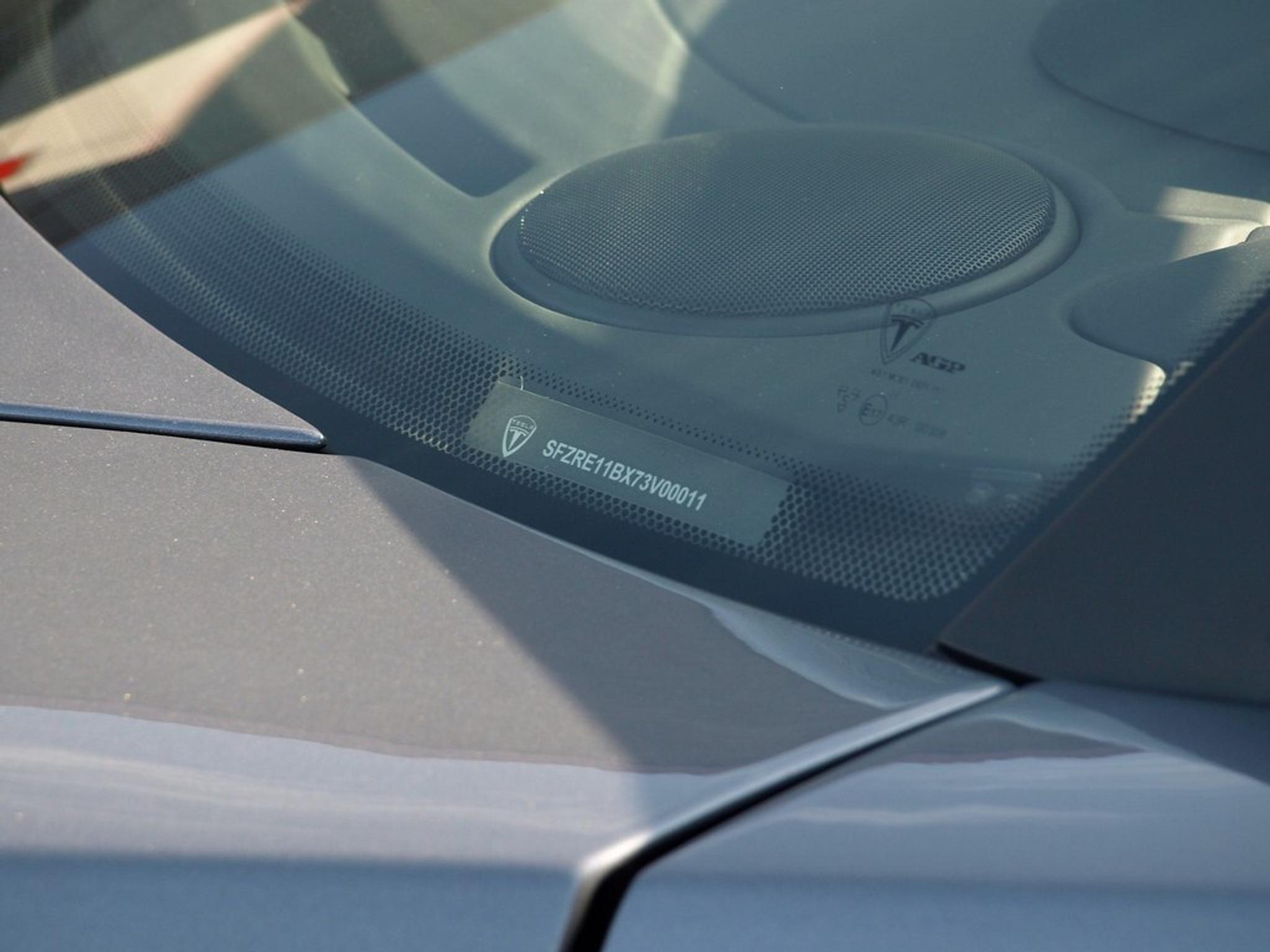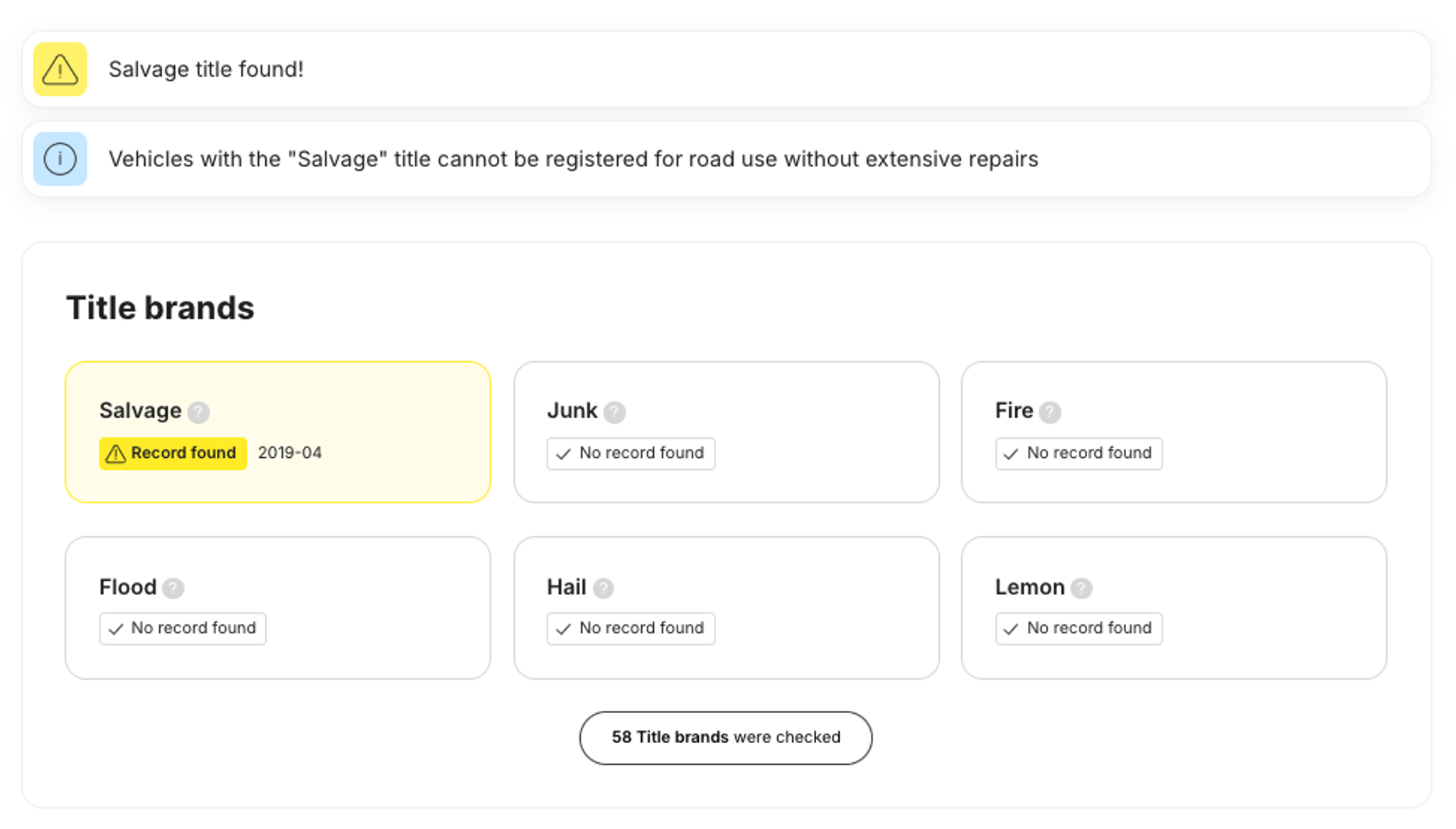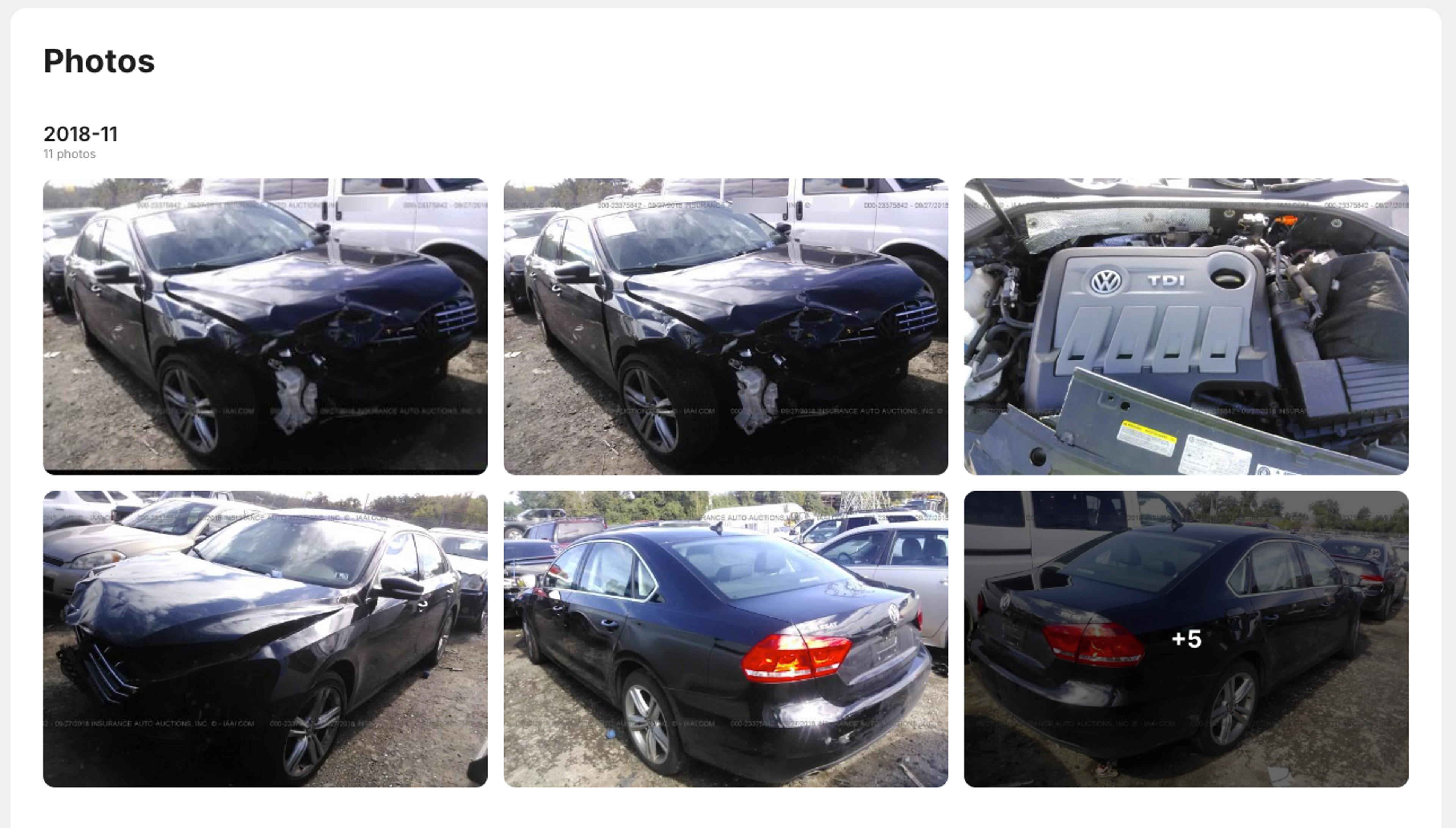24/05/2024
What is a car title?

A certificate of title (otherwise known as a car title) is a document that plays a vital role in car ownership. And not just because it’s proof that you own a vehicle – it can also reveal some intriguing details about the car’s past and current condition.
If you’re buying a car in the US (whether for local use or import), understanding car titles is crucial. So let’s look at what you should know about the certificate of title (and how carVertical can help you learn more).

Used cars have dark secrets
Reveal them all! Just enter a VIN code and click the button:
What is a certificate of title and how does it work?
A car title, also known as a certificate of title, is a legal document required to prove the ownership of a vehicle in the United States and can only be issued by the state government (typically the Department of Motor Vehicles (DMV)).
A vehicle is legally yours only when the title says so – paying for a car and driving it home doesn’t automatically make you the owner.

Due to varying rules and regulations, each state has unique car titles that have to be renewed if the owner moves to another state. For example, in some states, if you buy a car on finance, the bank can keep the title until the loan is paid off. Moreover, you may need notarized signatures to complete any title changes.
Difference between car title and registration document
In the United States, you need separate documents to prove a vehicle’s ownership and registration. A car title only proves that someone is a legal owner of the vehicle, while the registration document makes it road-legal.
One document doesn’t necessarily come with the other. For instance, heavy machinery on industrial sites or farms must have a title to prove ownership, but it often isn’t registered if it’s not used on public roads.
What does a car title look like and what information does it have?

Car titles vary in color depending on the state, and each title has a colored frame with the state's name on it. Titles contain information about the car and its owner, with an additional section dedicated to transferring the title.
Here are a few important sections of car titles that could be useful when learning about the vehicle.
Owner’s full name and address
When someone wants to know who owns a specific vehicle, they often ask, “Whose name is on the title?” A car title must have its owner’s full name and address since it serves as proof of ownership.
If a vehicle has multiple owners, the full names of each owner must be written on the title and divided with “and.”
The lienholder section is also filled if the vehicle is bought using a loan.
Vehicle Identification Number (VIN)
The Vehicle Identification Number, or VIN, is a unique 17-character code for every car, truck, and motorcycle. The number is used for identification purposes, registration, logging various information, and history checking, so it is essential to ensure that the VIN is legitimate.

Make sure the VIN on the car title and the vehicle match. The VIN number is usually located in several places on the car, the most common being the bottom of the windshield, the engine bay, and the inner side of the driver’s door. Also, make sure there are no signs of VIN tampering, such as scratches or misaligned letters.
Odometer reading on the issue date
When the owner on a title changes, an odometer reading is recorded on the issue date of a new title. This tells you how much the last owner of the vehicle drove it.
The Department of Transportation's Federal Highway Administration (FHWA) states that an average person drives 13,500 miles (approx. 22,000 km) per year – something to consider when inspecting a used vehicle.
Weight class
Some states have car titles that also display a weight class. In many countries, a vehicle’s registration cost depends on its weight, therefore, this information can give you an idea about the potential expenses.
Here’s how much vehicles of each weight class weigh:
- Class 1 – up to 6,000 lbs (approx. 2,700 kg)
- Class 2 – from 6,001 to 10,000 lbs (approx. 2,700 to 4,500 kg)
- Class 3 – from 10,001 lbs to 14,000 lbs (approx. 4,500 to 6,350 kg)
- Class 4 – from 14,001 lbs to 16,000 lbs (approx. 6,350 to 7,250 kg)
- Class 5 – from 16,001 lbs to 19,500 lbs (approx. 7,250 to 8,845 kg)
- Class 6 – from 19,501 lbs to 26,000 lbs (approx. 8,845 to 11,800 kg)
- Class 7 – from 26,001 lbs to 33,000 lbs (approx. 11,800 to 15,000 kg)
- Class 8 – over 33,001 lbs (approx. 15,000 kg)
These classes are divided into light, medium, and heavy duty vehicles. For instance, passenger vehicles and trucks that weigh up to 8,500 lbs (3,855 kg) are considered light duty vehicles.
Title assignment section
All car titles have an assignment section, marked “Assignment of Title by Owner” or “Transfer of Ownership.”
The fields in this section must be filled when selling the vehicle. If the vehicle has multiple owners listed on the title, most states require information on all owners to be provided.
Remember that a car title is a legal document issued exclusively by the state government. Therefore, the print should be clear, and there can’t be any signs of forgery. Make sure the make, model, technical characteristics, and VIN number on the document are correct.
Car title types: clean, clear, and branded titles
When a car gets into car accidents, floods, has fake mileage, is used as a taxi, etc., its title receives a “brand” (becomes a “branded title”). Usually, the phrase “car title type” just means the type of brand on the document. While there are close to 100 different title brands (varying by state), here are some of the most common title brands:
- Disclosed Damage. The vehicle has sustained damage to the extent that the damage is required to be disclosed under the jurisdiction's damage disclosure law.
- Dismantled. The vehicle can only be sold as parts and cannot be legally driven.
- Flood. Vehicle damaged by freshwater flood (or it is unknown whether the damage was caused by fresh water or salt water).
- Gray Market Compliant / Gray Market Not Compliant. Vehicle was manufactured for use outside the United States and has been brought into the United States. The vehicle is either in compliance or not in compliance with applicable federal standards.
- Junk. The vehicle is incapable of safe operation for use on the roads or highways and has no resale value except as a source of parts or scrap, or the vehicle's owner has irreversibly designated the vehicle as a source of parts or scrap. This vehicle shall never be titled or registered. Also known as non-repairable, scrapped, or destroyed.
- Lemon. A vehicle that has been bought back by the manufacturer under jurisdiction – defined regulations or laws, such as lemon laws.
- Odometer discrepancy. The vehicle has an odometer that has been tampered with.
- Prior taxi. Vehicle previously registered as a taxi.
- Reconstructed. A vehicle that has been permanently altered from original construction by removing, adding, or substituting major components.
- Salvage. Any vehicle which has been wrecked, destroyed or damaged, to the extent that the total estimated or actual cost of fixing the vehicle exceeds a jurisdiction-defined percentage of the retail value of the vehicle.
- Totaled. A vehicle that is declared a total loss by a jurisdiction or an insurer that is obligated to cover the loss or that the insurer takes possession of or title to.
- Warranty Return. Vehicle returned to the manufacturer because of a breach in the warranty.
You may have also heard about Clean and Clear titles – these are 2 different things. So what are they?
- Clean. A clean title refers to a car title that has no brands. All vehicles start with a clean title.
- Clear. The vehicle’s title has no financial liens or other legal ownership restrictions.
In other words, a title can be Branded and Clear at the same time, but it cannot be Branded and Clean
Car title lookup: use carVertical to check for title brands

When buying a car from the United States, always get a vehicle history report. carVertical reports have a Title check feature, which will tell you about any title brands the car may have.

Check your VIN
Avoid costly problems by checking a vehicle's history. Get a report instantly!
Since car titles can be branded with “salvage,” “junk,” or even “flood” brands for life, a quick check can help you spot bad deals right away. It can also help you negotiate a better price or at least give you the comfort of knowing what the car has been through.
Why is a car title important?
A car title is the only way to prove that you own a vehicle in the United States, that’s why it’s so important. However, it is necessary not only for proving the vehicle’s ownership, but also for buying and selling it.
Moreover, this document reflects any significant damage, displays the VIN number, and tells us whether there’s a lien on the vehicle.
Importance of a car title when buying or selling a car
Buying a car without a title is probably a waste of money – believing it belongs to you doesn’t make you the rightful owner.
Whether the vehicle will be used in the United States or exported overseas, a car title is essential to transfer the vehicle’s ownership and register it successfully. There are a few occasions when one can buy a used vehicle from the United States without a title, but then the vehicle is usually only good for parts and can’t be used on roads.

The information about brands in a car title can also be used to evaluate the vehicle's condition.
When a car has been stolen
Losing a car because of theft is one of the biggest fears for drivers, but the consequences are usually much lighter if you can prove that the vehicle belongs to you. For instance, some insurers may refuse your claim for your lost vehicle if you can’t prove ownership.
An even worse scenario is if someone steals your car with a car title inside it. In that case, they may have the necessary information and paperwork to legally transfer the vehicle to someone else or export it without restrictions. Make sure to contact the police immediately to declare your car stolen.
How to get a car title
You can face several scenarios when you need to transfer or get a car title.
In a private party car sale, a previous owner will have to transfer the title for you to ensure you’re the legal owner.
If you took out a loan to buy a car because there’s a lien on the title and, depending on your state, the bank can hold the title until the loan is paid off. Until then, you’ll have a car title with the lienholder’s name in it.
Replacing a lost or stolen title
Since car titles are mostly needed when buying or selling a vehicle, people tend to lose them for various reasons. Luckily, getting a car title replacement is possible when it’s lost or stolen, but you’ll need some proof that the car belongs to you.
If your car title is lost and you want to get a replacement, go to your state office or visit their website (many state offices can issue titles online). They’ll ask for a VIN number and an alternative ownership proof, such as a bill of sale or a loan statement. If you give proper proof of ownership to your DMV, they will issue a new title within a few weeks.

If your car title has been stolen, call the police to report the theft first, and only then go to the DMV.
When transferring a car title, the document is essential for both sides, therefore, you can’t and shouldn’t buy a used car if the owner doesn’t have its title.
Transferring a car title
The process of transferring a car title is simple and straightforward. Here’s how it goes:
1.The seller signs the car title. All car titles have the assignment section, which has to be signed by the seller in case of a transfer. If a title features more than one owner, all owners must sign it to complete the transfer.
2.The buyer takes the title to the state office. When the title is released with a seller’s signature, a buyer can take it to the state office (typically, the Department of Motor Vehicles (DMV)).
3.The buyer gets a new car title. Within a few weeks, the buyer receives a new title with his/her name on it (unless the vehicle is financed with an auto loan, in which case the title may be sent to the lender).
In some states, the signatures on a car title must be notarized, so don’t forget to check the requirements in your state. Also, some states offer electronic car titles, which can be sent via email. In that case, if you want a paper version, you may need to pay an additional fee.
Where should you keep your car title?
You should treat a car title like your birth certificate or title deed. You don’t need this document often, but it’s essential and shouldn’t be accessible to other people.
You won’t need your car title when getting pulled over or for other day-to-day situations, so your car’s glovebox isn’t the best place for it.
Put it somewhere safe at home, together with other important documents. It’s always a good idea to have a fireproof container or another secure place at home to store your car title and other valuables.
To be extra safe, you can also scan your car title to have a digital copy, which will ease the process of a title replacement in case you lose the original one. Just make sure to store digital versions securely in your external drive or use encryption software.
